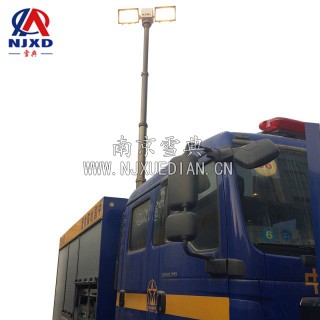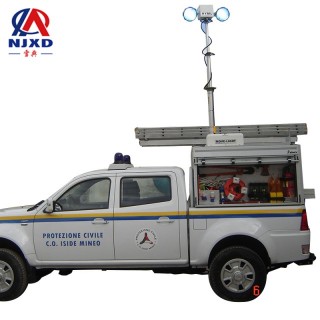NEWS
Product features of digital signal processing remote control lift rod
Time:2020-11-09 View:

Digital signal processing technology is one of the technologies needed by remote control lift rod. Digital signal processing is to transform the motion changes of things into a string of numbers, and extract useful information from them by means of calculation to meet the needs of our practical application.
Content introduction
The initial form of most signals is the motion changes of things. In order to measure and process them, sensors should be used to convert their characteristics into electrical signals first. After these electrical signals are processed, then transform them into forms that we can see, hear or use.
Some auxiliary circuits are needed before and after digital signal processing, which form a system with digital signal processor.
The initial signal represents the motion transformation of something, which can be converted into an electrical signal through the signal conversion unit. For example, sound waves become electrical signals after passing through the microphone. Another example is pressure, which becomes an electrical signal after passing through the pressure sensor. An electrical signal can be regarded as a combination of sine waves of many frequencies.
The low-pass filtering unit filters out some high-frequency components of the signal to prevent the loss of the basic characteristics of the original signal during analog-to-digital conversion. The analog-to-digital conversion unit measures the analog signal at intervals and uses binary number representation for the measurement result.
The digital signal processing unit is actually a computer, which calculates binary digital signals according to instructions. For example, multiplying an acoustic wave signal with a high-frequency sine wave signal can achieve amplitude modulation. In fact, digital signals often need to be converted back to analog signals to play its role. For example, radio is transmitted outward by electromagnetic waves through the antenna, and the electromagnetic waves at this time can only be analog signals.
The digital-to-analog conversion unit converts the processed digital signal into a continuous-time signal, which is characterized by a series of straight lines connected. For example, the modulated digital signal can only be sent to the antenna after it becomes an analog signal, and can be transmitted outward through the antenna. The low-pass filtering unit has an average effect, and the unsmooth signal can become relatively smooth after low-pass filtering.
After the smooth signal passes through the signal conversion unit, it becomes the movement change of a certain substance. For example, a loudspeaker can convert electric waves into sound waves. Another example is an antenna, which can convert current into electromagnetic wave. Electromagnetic wave is a kind of electric field and magnetic field changing with each other, which can move rapidly in the form of wave in space.
If only the processing process of electrical signals is considered, the digital signal processing system can be regarded as composed of five units.
If low-pass filtering and analog-to-digital/analog-to-analog conversion are regarded as one unit, digital signal processing can also be regarded as consisting of three units.

Product Features
signal is the physical expression form of information, or the function of transmitting information, while information is the specific content of signal.
analog signal: a signal with continuous time and amplitude.
digital signal: a discrete (quantized) signal in time and amplitude.
Digital signals can be represented by a sequence of numbers, and each number can be expressed in the form of binary code, which is suitable for computer processing.
One-dimensional (1-D) signal: a function of an independent variable.
Two-dimensional (2D) signal: a function of two independent variables.
Multidimensional (M-D) signal: a function of multiple independent variables.
System: the physical device that processes signals. In other words, all kinds of equipment that can transform signals to meet people's requirements. Analog system and digital system.
The content of signal processing: filtering, transformation, detection, spectrum analysis, estimation, compression, recognition and a series of processing.
Most science and engineering encounter analog signals. Previously, the theory and realization of analog signal processing were studied.
Disadvantages of analog signal processing: it is difficult to achieve high precision, is greatly affected by the environment, has poor reliability, and is not flexible.
Advantages of digital systems: small size, low power consumption, high precision, high reliability, high flexibility, easy large-scale integration, and able to perform two-dimensional and multi-dimensional processing
With the rapid development of large-scale integrated circuits and digital computers, and the maturity and perfection of digital signal processing theory and technology since the late 1960 s, digital methods are used to process signals, namely digital signal processing, analog signal processing has been gradually replaced.
With the arrival of information age and digital world, digital signal processing has become an extremely important subject and technical field.

CATEGORY
NEWS
- Current situation and prospect of remote control lift rod telemetry remote control system
- Product features of digital signal processing remote control lift rod
- Digital signal processing processor remote control lift rod
- Application of remote control lift rod digital signal processing
- Digital signal processing and application remote control lift rod